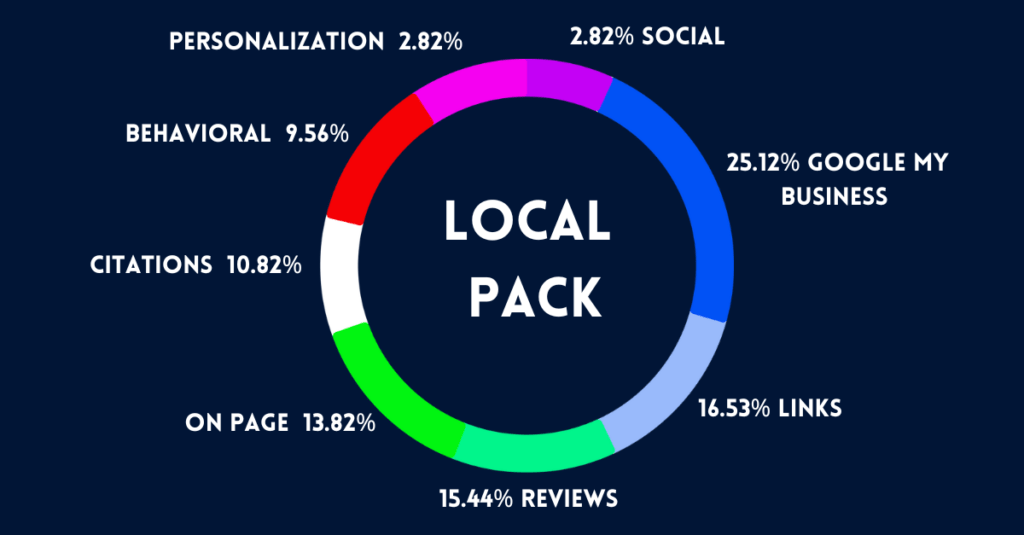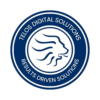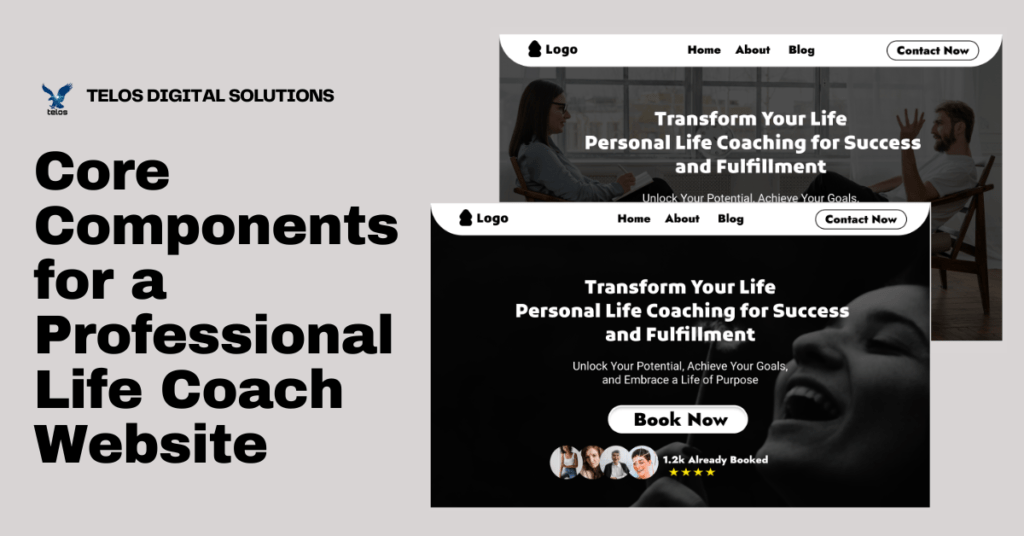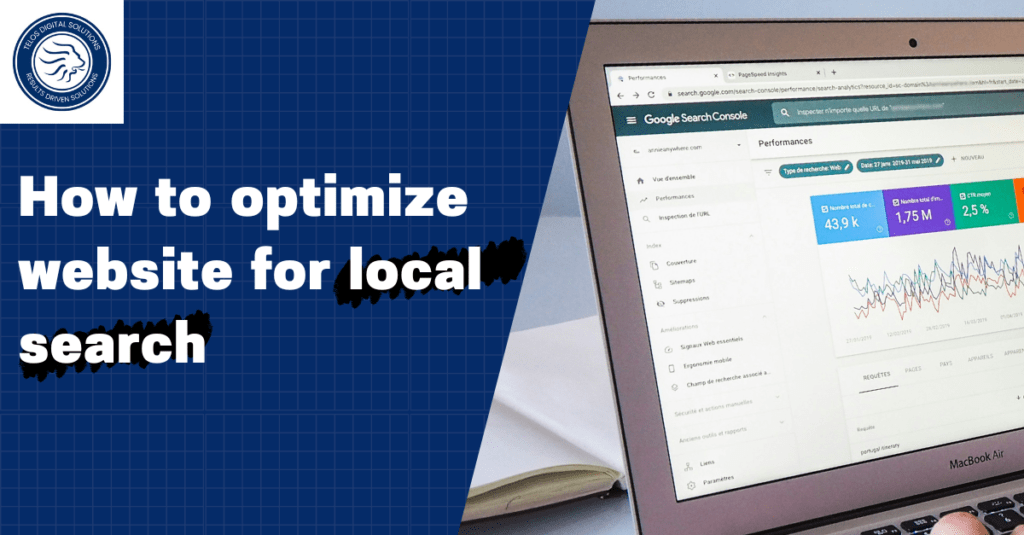There are about 3.5 billion searches on Google every day, and nearly half of them (46%) have local intent. This means people are looking for information relevant to their immediate area. If you have a local business and your profile and website aren’t visible to these users, you’re missing out on potential leads.
To attract more local leads, you need to focus on local SEO. In this post, I’ll cover everything you need to know about whether local SEO is profitable for your small business, how to rank in search results, and how to optimize your business profile to appear in the top three local results (pack-3).
What is Local SEO for Small Businesses?
Local SEO is the process of optimizing your online presence to attract more leads from relevant local searches. In local SEO, the focus is mainly on optimizing two things: your business profile and your website.
Example of a Local Query
Let’s take an example of a local query like “best doctor in New York” on Google or any other search engine. When you search for this, you’ll see some results, including a section called the “local pack” or “pack-3” on Google, which shows the top three local business listings. To rank in the pack-3, you need to optimize your Google Business Profile.
Additionally, you’ll find regular search results just like other queries. To rank well in these search results, you need to optimize your website.
You might wonder how to optimize your business profile and your website for local SEO. First, you need to understand why working on local SEO is essential.
Why local SEO is important for small business
Yes, local SEO is very profitable for small businesses or any business providing services to local customers. It’s more cost-effective than general SEO and has a high conversion rate. According to Google’s data, 76% of people who search for something nearby on their smartphone visit a business within a day, and 28% of those searches result in a purchase. If you want to attract more customers to your local business, you should definitely invest in local SEO.
Now that you know why you should work on local SEO, let’s talk about how to rank on pack-3.
How to rank your Google Business Profile in pack-3 ?
To rank your Google Business Profile in pack-3 (the top three local search results), you need to optimize your profile and engage in ongoing management. This will help you rank for certain keywords over the long term.
Let’s look at the map pack and map search factors first. Proximity (how far the search result is from the searcher) is a major factor in map pack results, and since that factor falls under the Google My Business area, it’s the largest piece of the pie at 25.12%.

Links signals comes in second with 16.53%, followed by review signals at 15.44%. Notice that for showing up in the map pack, your Google My Business profile, your inbound links, and your reviews matter more than the content on your site, which comes in at number 4 with 13.82%.
Citation signals are the next piece, accounting for 10.82% of the total signal weight. Behavioral signals such as click-through rate, clicks to call on mobile, and clicks for directions account for 9.56%, followed by personalization factors at 5.88%.
The final small piece of the pie covers social signals, at a pretty ineffective 2.82% of the total weight.
Here are the steps you should follow:
Optimize Your Google Business Profile
We recently worked on the project of google my business profile, Condition is that their ranking of google business profile is very low i.e. 49th rank. When we work on it within less than 10 days we start to rank on pack-3.
Did you know how these things are done? We work on the basis of the Local SEO checklist.
From recent years google algorithms become much more strict and more toward building the authority to the users of google. So if you want to rank on google it is really important to work under the guidance of google.
So to optimize your business profile you need to work on this local SEO checklist:
Complete your business profile
According to Google, customers are 2.7 times more likely to view a business as reputable when they find a complete Business Profile on Google Search and Maps. Additionally, customers are 70% more likely to visit and 50% more likely to consider purchasing from businesses with a complete Business Profile.
So it is really important to complete the details of your business profile but Before completing the business profile you need to verify your profile then you need to complete your business profile.
Important things to complete:
Add services
You can inform customers about the types of services you offer, enhancing your profile’s effectiveness even further.
Upload photos & videos
Photos and videos are very helpful for customers to learn more about the services you offer. To increase engagement and boost your ranking in search results, you should regularly add photos and videos to your profile. Both you and your customers can upload these visual elements to enhance your profile.
There are different type of photos you can add on your profile :
- Logo: Help your customers recognize your business on Google. For businesses that have their basic information, such as a phone number or hours of operation, the Business Profile highlights the logo.
- Cover Photo: Set a cover photo at the top of your profile that best represents your business. Note that this action doesn’t always guarantee the cover photo will show up as the first image for your business.
- Business Photos: Add various photos to highlight different features of your business to attract and inform customers.
Add description
When adding your business description, focus on making it clear and real so that anyone can understand what your business is about. Use this field to provide useful information about your services and products, as well as the mission and history of your business.
Mistakes to Avoid
- Do Not Add Offers: Provide information about your business without including special offers or promotions.
- No Links: Do not include any type of links.
- Avoid Low-Quality or Distracting Content: Ensure the content is high-quality and relevant. Avoid misspellings, gimmicky characters, or gibberish.
Key Elements to Include
- Main Service: Clearly describe your primary service or product.
- Target Audience: Specify who your services or products are intended for.
- Competitive Advantage: Explain what sets your business apart from others.
- Call to Action: Encourage potential customers to take the next step, such as contacting you or visiting your website.
By following these guidelines, you can craft a compelling and informative business description that effectively communicates your value to potential customers.
Important Details to Include in Your Business Profile
When completing your business profile, it’s crucial to provide comprehensive and up-to-date information. This ensures that customers can easily understand what your business offers and how to reach you. Here are some important details you should never forget to complete:
- Business Name: Ensure your business name is accurately listed.
- Address: Provide your full business address to help customers find your location.
- Phone Number: Include a contact number where customers can easily reach you.
- Website: List your website URL to direct customers to more detailed information.
- Hours of Operation: Clearly state your business hours, including any special hours for holidays or events.
- Business Category: Choose the most relevant category for your business to help customers find you through searches.
- Customer Reviews: Encourage and respond to customer reviews to build credibility and engage with your audience.
- Attributes: Attributes in your business profile are additional details that provide customers with more specific information about what your business offers. These attributes can significantly enhance your profile by making it more informative and engaging, thus helping customers make informed decisions.
Links
A strong link signal can greatly improve your Google Business Profile. Here’s how different types of links help:
Backlinks: These are links from other websites pointing to your business. If reputable sites link to your profile, it tells Google that your business is trustworthy and important, which can boost your profile’s ranking.
Internal Links: Linking from your own website to your Google Business Profile and from your profile back to your site helps Google understand the connection between them. This can make your profile and website more relevant and easier to find.
Social Media Links: Sharing your Google Business Profile on social media platforms drives more traffic and interaction. This increased activity signals to Google that your business is popular and relevant.
Focusing on these types of links can help enhance the effectiveness and visibility of your Google Business Profile.
Customers Reviews
Review signals are the third most important factor for ranking Google My Business profiles in the local pack, making up 15.44% of the ranking criteria. Why does this matter? Let’s look at these stats:
- Forbes states that about 90% of customers read reviews before visiting a business.
- BrightLocal says that 93% of customers read reviews of local businesses to determine their quality.
Reviews also help Google understand what your business is about. Reviews with keywords related to your business show Google how relevant your business is to a search query.
So, it’s easy to see why getting good reviews is crucial for small business owners. You have to earn reviews by delivering quality work—there are no shortcuts to quality reviews. It’s also important to reply to all your Google reviews, as this helps enhance engagement.
On-Site SEO for local business
On site SEO is quite different from usual SEO because in local SEO you need to optimize your site for local keywords, local areas and more priority on helping your business profile.
Focus Areas for Local On-Site SEO
Title Tags and Meta Descriptions
- Include local keywords and your business location in title tags and meta descriptions to help search engines and users identify your relevance to local searches.
Header Tags
- Use local keywords in header tags to structure your content and signal relevance to local queries.
Content Optimization
- Write content that addresses local issues or interests and includes local keywords naturally. Create valuable, location-specific content that resonates with your local audience.
Local Schema Markup
- Implement Local Business Schema to enhance your site’s visibility in local search results and provide search engines with detailed business information.
Mobile Optimization
- Ensure your site is mobile-friendly, as many local searches are conducted on mobile devices. A responsive design improves user experience and helps with local SEO.
Local Internal Linking
- Create internal links to local landing pages or relevant local content on your site to enhance navigation and support local SEO.
By focusing on these local-specific strategies, you can improve your local search visibility and attract more customers from your geographic area.
Local Citations
Local citations are the 5th most important ranking factor with 10.82%. These are mentions of your business’s name, address, and phone number (NAP) on other local websites or directories. Consistent and accurate citations across the web help Google verify your business’s location and legitimacy, improving your profile’s visibility. They can appear on various platforms, including:
- Local Business Directories: Websites like Yelp, Yellow Pages, and Angie’s List.
- Review Sites: Platforms like TripAdvisor and Trustpilot.
- Local News Sites: Articles or news stories mentioning your business.
- Industry-Specific Sites: Websites that cater to your specific industry or niche.
- Social Media Profiles: Your business’s name and contact details on platforms like Facebook, Instagram, and LinkedIn.
In addition to local citations and on-site SEO, several other signals play a significant role in improving your ranking in the local pack (Pack-3) on Google.
Here’s a detailed look at behavior signals, personalization signals, and social signals:
Behavioral Signals
Behavioral signals are metrics related to how users interact with your business listing and website.
These signals help Google determine the relevance and quality of your business to local search queries.
Click-Through Rate (CTR): The percentage of users who click on your business listing after seeing it in search results. A higher CTR indicates that users find your listing compelling and relevant.
Bounce Rate: The rate at which visitors leave your site after viewing only one page. A lower bounce rate suggests that users find your site engaging and relevant to their search.
Dwell Time: The amount of time users spend on your website. Longer dwell times indicate that visitors find your content useful and relevant.
Direct Clicks: The number of users who directly click on your business’s name in search results or maps, as opposed to searching for related terms.
Improvement Tips:
- Optimize your website’s usability: Ensure fast loading times, a clean design, and clear navigation.
- Create engaging content: Provide valuable information that keeps visitors on your site longer.
- Enhance your listing: Use high-quality images, accurate business information, and compelling descriptions to encourage clicks.
Personalization Signals
Personalization signals refer to how Google tailors search results based on individual users’ search history, location, and preferences. These signals help Google deliver more relevant results to each user.
Search History: Google takes into account a user’s past search queries and interactions to provide personalized results.
Location: Google uses the user’s current location to prioritize local businesses. Businesses with accurate location data are more likely to appear in local searches.
Search Preferences: Users’ settings and preferences, such as language and location, influence the search results they see.
Improvement Tips:
- Ensure consistent and accurate local information: Make sure your business name, address, and phone number (NAP) are consistent across all platforms.
- Encourage positive user interactions: Positive reviews and high engagement can improve your listing’s appeal in personalized search results.
Social Signals
Social signals are indicators of your business’s popularity and activity on social media platforms. While social media signals are not a direct ranking factor, they can influence your local search visibility indirectly.
Social Media Engagement: The level of interaction (likes, shares, comments) your posts receive can indicate the popularity and relevance of your business.
Social Media Mentions: References to your business on social media platforms can increase brand awareness and drive traffic to your site.
Local Social Media Activity: Engagement with local community groups and posts about local events can enhance your local presence and relevance.
Improvement Tips
- Be active on social media: Regularly post content related to your business and engage with your audience.
- Encourage user-generated content: Ask customers to share their experiences and tag your business.
- Participate in local conversations: Join local groups and engage in discussions to increase your visibility within your community.
Conclusion
Local SEO is crucial for small businesses looking to attract nearby customers and boost visibility. With many Google searches having local intent, optimizing your Google Business Profile and website can help you rank higher in local search results.
Focus on completing your business profile, using local keywords, and gaining high-quality reviews. Enhance your local SEO with strong citations, behavioral signals, and social media engagement. By consistently applying these strategies, your business can effectively compete in local searches and connect with your community, driving more leads and growth.


